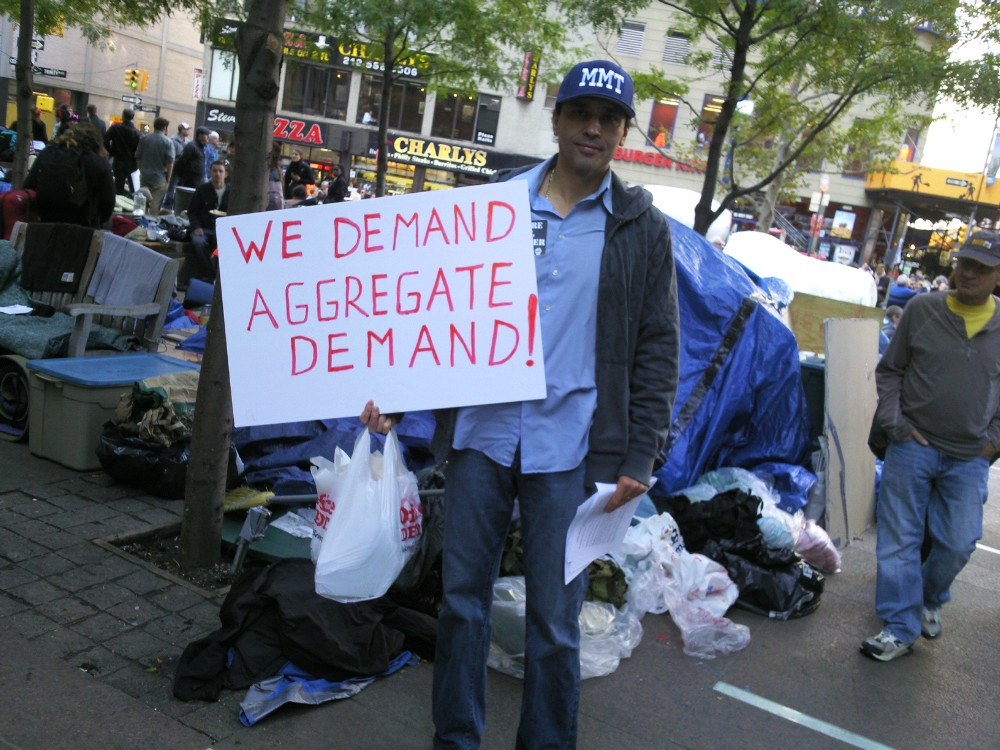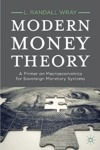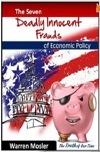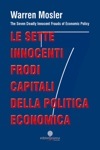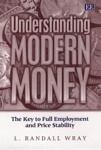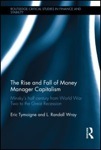By William K. Black
Bob Ivry, Hugh Son and Christine Harper have written anarticle that needs to be read by everyone interested in the financialcrisis. The article (available here) is entitled: BofA Said to Split RegulatorsOver Moving Merrill Derivatives to Bank Unit. The thrust of their story is that Bank of America’s holdingcompany, BAC, has directed the transfer of a large number of troubled financialderivatives from its Merrill Lynch subsidiary to the federally insured bank Bank of America (BofA). The story reports that the FederalReserve supported the transfer and the Federal Deposit Insurance Corporation(FDIC) opposed it. Yves Smith of Naked Capitalism has written an appropriately blistering attack on this outrageous action, which puts thepublic at substantially increased risk of loss.
I write toadd some context, point out additional areas of inappropriate actions, and adda regulatory perspective gained from dealing with analogous efforts by holdingcompanies to foist dangerous affiliate transactions on insureddepositories. I’ll begin by adding somehistorical context to explain how B of A got into this maze of affiliateconflicts.
KenLewis’ “Scorched Earth” Campaign against B of A’s Shareholders
AcquiringCountrywide: the High Cost of CEO Adolescence
During this crisis, Ken Lewis went on a buying spreedesigned to allow him to brag that his was not simply bigger, but thebiggest. Bank of America’s holdingcompany – BAC – became the acquirer of last resort. Lewis began his war on BAC’s shareholders byordering an artillery salvo on BAC’s own position. What better way was there to destroyshareholder value than purchasing the most notorious lender in the world –Countrywide. Countrywide was in themidst of a death spiral. The FDIC wouldsoon have been forced to pay an acquirer tens of billions of dollars to induceit to take on Countrywide’s nearly limitless contingent liabilities and toxicassets. Even an FDIC-assistedacquisition would have been a grave mistake. Acquiring thousands of Countrywide employees whose primary mission wasto make fraudulent and toxic loans was an inelegant form of financialsuicide. It also revealed the negligiblevalue Lewis placed on ethics and reputation.
But Lewis did not wait to acquire Countrywide with FDICassistance. He feared that a rival wouldacquire it first and win the CEO bragging contest about who had the biggest,baddest bank. His acquisition ofCountrywide destroyed hundreds of billions of dollars of shareholder value andled to massive foreclosure fraud by what were now B of A employees.
But there are two truly scary parts of the story of B of A’sacquisition of Countrywide that have received far too little attention. B of A claims that it conducted extensive duediligence before acquiring Countrywide and discovered only minor problems. If that claim is true, then B of A has beendoomed for years regardless of whether it acquired Countrywide. The proposed acquisition of Countrywide was hugeand exceptionally controversial even within B of A. Countrywide was notorious for its fraudulentloans. There were numerous lawsuits andformer employees explaining how these frauds worked.
B of A is really “Nations Bank” (formerly named NCNB). When Nations Bank acquired B of A (the SanFrancisco based bank), the North Carolina management took completecontrol. The North Carolina managementdecided that “Bank of America” was the better brand name, so it adopted thatname. The key point to understand isthat Nations/NCNB was created through a large series of aggressive mergers, sothe bank had exceptional experience in conducting due diligence of targets foracquisition and it would have sent its top team to investigate Countrywidegiven its size and notoriety. Theacquisition of Countrywide did not have to be consummated exceptionallyquickly. Indeed, the deal had an “out”that allowed B of A to back out of the deal if conditions changed in an adversemanner (which they obviously did). If Bof A employees conducted extensive due diligence of Countrywide and could notdiscover its obvious, endemic frauds, abuses, and subverted systems then theyare incompetent. Indeed, that word istoo bloodless a term to describe how worthless the due diligence team wouldhave had to have been. Given the manyacquisitions the due diligence team vetted, B of A would have been doomedbecause it would have routinely been taken to the cleaners in those earlierdeals.
That scenario, the one B of A presents, is not credible. It is far more likely that B of A’s seniormanagement made it clear to the head of the due diligence review that the dealwas going to be done and that his or her report should support that conclusion. This alternative explanation fits well with Bof A’s actual decision-making. Countrywide’s (and B of A’s) reportedfinancial condition fell sharply after the deal was signed. Lewis certainly knew that B of A’s actualfinancial condition was much worse than its reported financial condition andhad every reason to believe that this difference would be even worse atCountrywide given its reputation for making fraudulent loans. B of A could have exercised its option towithdraw from the deal and saved vast amounts of money. Lewis, however, refused to do so. CEOs do not care only about money. Ego is a powerful driver of conduct, and CEOscan be obsessed with status, hierarchy, and power. Of course, Lewis knew he could walk awaywealthy after becoming a engine of mass destruction of B of A shareholdervalue, so he could indulge his ego in a manner common to adolescent males.
AcquiringMerrill Lynch: the Lure of Liar’s Loans
Merrill Lynch is the quintessential example of why it wascommon for the investment banks to hold in portfolio large amounts ofcollateralized debt obligations (CDOs). Some observers have jumped to the naïve assumption that this indicatesthat the senior managers thought the CDOs were safe investments. The “recipe” for an investor maximizingreported income differs only slightly from the recipe for lenders.
- Grow rapidly by
- Holding poor quality assets that provide a premium nominal yield while
- Employing extreme leverage, and
- Providing only grossly inadequate allowances for future losses on the poor quality assets
Investment banks that followed this recipe (and most largeU.S. investment banks did), were guaranteed to report record (albeit fictional)short-term income. That income wascertain to produce extreme compensation for the controlling officers. The strategy was also certain to produceextensive losses in the longer term – unless the investment bank could sell itslosing position to another entity that would then bear the loss.
The optimal means of committing this form of accountingcontrol fraud was with the AAA-rated top tranche of CDOs. Investment banks frequently purport to basecompensation on risk-adjusted return. Ifthey really did so investment bankers would receive far less compensation. The art, of course, is to vastly understatethe risk one is taking and attribute short-term reported gains to the officer’s brilliance in achievingsupra-normal returns that are not attributable to increased risk(“alpha”). Some of the authors of Guaranteed to Fail call this processmanufacturing “fake alpha.”
The authors are largely correct about “fake alpha.” The phrase and phenomenon are correct, butthe mechanism they hypothesize for manufacturing fake alpha has no basis inreality. They posit honest gambles on“extreme tail” events likely to occur only in rare circumstances. They provide no real world examples. If risk that the top tranche of a CDO wouldsuffer a material loss of market values was, in reality, extremely rare then itwould be impossible to achieve a substantial premium yield. The strategy would diminish alpha rather thanmaximizing false alpha. The risk thatthe top tranche of a CDO would suffer a material loss in market value washighly probable. It was not a tailevent, much less an “extreme tail” event. CDOs were commonly backed by liar’s loans and the incidence of fraud inliar’s loans was in the 90% range. Thetop tranches of CDOs were virtually certain to suffer severe losses as soon asthe bubble stalled and refinancing was no longer readily available to delay thewave of defaults. Because liar’s loanswere primarily made to borrowers who were not creditworthy and financiallyunsophisticated, the lenders had the negotiating leverage to charge premiumyields. The officers controlling therating agencies and the investment banks were complicit in creating a corruptsystem for rating CDOs that maximized their financial interests by routinelyproviding AAA ratings to the top tranche of CDOs “backed” largely by fraudulentloans. The combination of the fake AAArating and premium yield on the top tranche of fraudulently constructed (andsold) CDOs maximized “fake alpha” and made it the “sure thing” that is one ofthe characteristics of accounting control fraud (see Akerlof & Romer 1993;Black 2005). This is why many of theinvestment banks (and, eventually, Fannie and Freddie) held substantial amountsof the top tranches of CDOs. (A similardynamic existed for lower tranches, but investment banks also found it muchmore difficult to sell the lowest tranches.)
Merrill Lynch was known for the particularly large CDOpositions it retained in portfolio. These CDO positions doomed Merrill Lynch. B of A knew that Merrill Lynch had tremendouslosses in its derivatives positions when it chose to acquire MerrillLynch.
Giventhis context, only the Fed, and BAC, could favor the derivatives deal
Lewis and his successor, Brian Moynihan, have destroyednearly one-half trillion dollars in BAC shareholder value. (See my prior post on the “Divine Right ofBank Profits…”) BAC continues todeteriorate and the credit rating agencies have been downgrading it because ofits bad assets, particularly its derivatives. BAC’s answer is to “transfer” the bad derivatives to the insured bank – transforming (alaIreland) a private debt into a public debt.
Banking regulators have known for well over a century aboutthe acute dangers of conflicts of interest. Two related conflicts have generated special rules designed to protectthe bank and the insurance fund. Onerestricts transactions with senior insiders and the other restrictstransactions with affiliates. The scamis always the same when it comes to abusive deals with affiliates – theytransfer bad (or overpriced) assets or liabilities to the insured institution. As S&L regulators, we recurrently facedthis problem. For example, Ford MotorCompany attempted to structure an affiliate transaction that was harmful to theinsured S&L (First Nationwide). Thebank, because of federal deposit insurance, typically has a higher creditrating than its affiliate corporations.
BAC’s request to transfer the problem derivatives to B of Awas a no brainer – unfortunately, it was apparently addressed to officials atthe Fed who meet that description. Anycompetent regulator would have said: “No, Hell NO!” Indeed, any competent regulator would havedeveloped two related, acute concerns immediately upon receiving therequest. First, the holding company’scontrolling managers are a severe problem because they are seeking to exploitthe insured institution. Second, thesenior managers of B of A acceded to the transfer, apparently without protest,even though the transfer poses a severe threat to B of A’s survival. Their failure to act to prevent the transfercontravenes both their fiduciary duties of loyalty and care and should lead totheir resignations.
Now here’s the really bad news. First, this transfer is a superb “naturalexperiment” that tests one of the most important questions central to thehealth of our financial system. Does theFed represent and vigorously protect the interests of the people or thesystemically dangerous institutions (SDIs) – the largest 20 banks? We have run a real world test. The sad fact is that very few Americans willbe surprised that the Fed represented the interests of the SDIs even though theywere directly contrary to the interests of the nation. The Fed’s constant demands for (andcelebration of) “independence” from democratic government, combined withslavish dependence on and service to the CEOs of the SDIs has gone beyondscandal to the point of farce. I suggestorganized “laugh ins” whenever Fed spokespersons prate about their“independence.”
Second, I would bet large amounts of money that I do nothave that neither B of A’s CEO nor the Fed even thought about whether thetransfer was consistent with the CEO’s fiduciary duties to B of A (v.BAC). We took depositions during theS&L debacle in which senior officials of Lincoln Savings and its affiliateswere shocked when we asked “whose interests were you representing – the S&Lor the affiliate?” They had obviouslynever even considered their fiduciary duties or identified their actualclient. We blocked a transaction thatwould have caused grave injury to the insured S&L by taking the holdingcompany (Pinnnacle West) off the hook for its obligations to the S&L. That transaction would have passed routinely,but we flew to the board of directors meeting of the S&L and reminded themthat their fiduciary duty was to the S&L, that the transaction was clearlydetrimental to the S&L and to the benefit of the holding company, and thatwe would sue them and take the most vigorous possible enforcement actionsagainst them personally if they violated their fiduciary duties. That caused them to refuse to approve thetransaction – which resulted in a $450 million payment from the holding companyto the S&L. (I know, $450 millionsounds quaint now in light of the scale of the ongoing crisis, but back then itpaid for our salaries in perpetuity.)
Third, reread the Bloomberg column and wrap your mind aroundthe size of Merrill Lynch’s derivatives positions. Next, consider that Merrill is only one,shrinking player in derivatives. Finally, reread Yves’ column in NakedCapitalism where she explains (correctly) that many derivatives cannot beused safely. Add to that my point abouthow they can be used to create a “sure thing” of record fictional profits,record compensation, and catastrophic losses. This is particularly true about credit default swaps (CDS) because ofthe grotesque accounting treatment that typically involves no allowances forfuture losses. (FASB: you must fix thisurgently or you will allow a “perfect crime.”). It is insane that we did not pass a one sentence law repealing theCommodities Futures Modernization Act of 2000. Between the SDIs, the massive, sometimes inherently unsafe and largelyopaque financial derivatives, the appointment, retention, and promotion offailed anti-regulators, and the continuing ability of elite control frauds toloot with impunity we are inviting recurrent, intensifying crises.
I’ll close with a suggestion and request to reporters. Please find out who within the Fed approvedthis deal and the exact composition of the assets and liabilities that weretransferred.
To keep up with Bill’s work follow on Twitter @WilliamKBlack and @deficitowl









